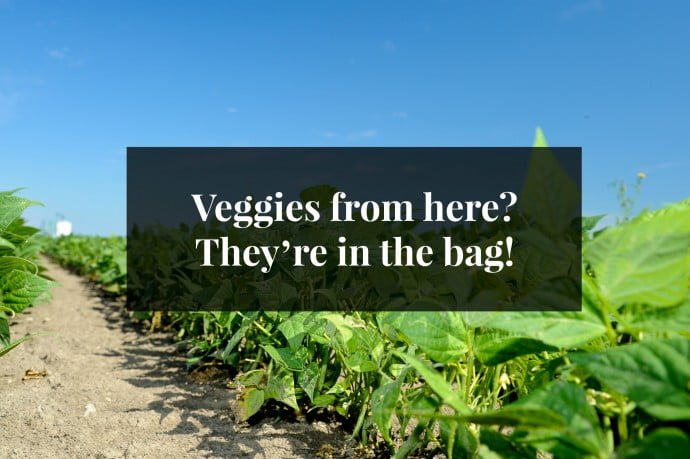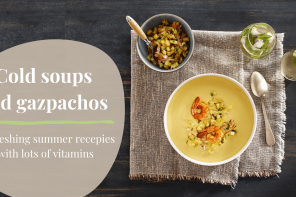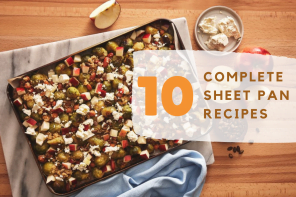Peas, beans, corn and the like – Did you know that Bonduelle produces vegetables mixes where it has plants like Quebec, Ontario and Alberta?
Even in a context of globalization and delocalization of inexpensive supplies, Bonduelle continues to thrive. The company associates itself with agricultural producers from here to produce its flagship brand, Arctic Gardens. It’s a brand that agricultural director, Robert Deschamps, believes in completely. This agronomist has signed supply contracts with more than 400 growers in Quebec. His goal: To supply flash-freezing and canning plants as locally as possible to reduce transport costs, avoid unnecessary food kilometres and lower the carbon footprint of products.
Welcome to Jocelyn’s
Crops are slow, but the earth is patient. You’ll learn just how much at grower Jocelyn Michon’s who knows that farming the land is demanding work and requires precision, as well as a good dose of self-sacrifice when seeds are in the soils – and in the hands of Mother Nature. He is located in what’s known as Quebec’s garde-manger, the fertile plain of Saint-Hyacinthe in the province’s Montérégie region.
However, this Maskoutan doesn’t sows seeds with farming equipment or works the soil with machinery beforehand anymore The goal: support life, like the lives of worms, mushrooms, bacteria and other microscopic critters. “I fight weeds with herbicides and cover crops instead of a plough!”, the farmer explains. The direct seeding technique allows him to reduce his fuel consumption by four times which generates less gashouse effect. No more ploughing, harrowing or removing rocks from the fields. About 10% of Quebec grain farmers use this innovative technique.
This is how Jocelyn Michon is a specialist in terms of soil heath and conservation. We’ve invited him to many seminars here and abroad to listen to him share his seeding and crop cover knowledge – two hot techniques right now. In 2009, he was inducted into the Soil Conservation Council of Canada (SCCC) Hall of Fame. Four years later, he brought back the Excellent in Agri-environment award from the Ordre national du mérite agricole, Quebec’s Order of Agricultural Merit.
Almost every month, the grower welcomes groups of students or agricultural producers who come to see the benefits of not ploughing when they’re not researching or growing themselves. “I’m not a certified biologist as I use herbicides. However, I do consider my soils to be more alive than organic soil because organic soil producers constantly weed the fields which destroys beings living in the soil”, this earth lover assesses.
“When people ask what pushed me towards direct seeding, I tell them laziness because I like to do as little as possible!”, he laughs. In the 70s, Jocelyn avoided going to machinery to work the earth less. He also gradually decreased the working depth of equipment – from 30 to 20 cm, then to 10, then 5. In 1994, he was finally ready to seed directly into the earth. Today, on nice summer nights, he inspects his fields with care by making the rounds in an all-terrain vehicle with his partner, Nicole.
“In agriculture, I feel someone in front of a blackboard. I paint my own canvas. You have to be an artist to succeed in direct seeding because it is an art!”
Without touching the wheel of a tractor, a GPS system linked to a homing device allows Jocelyn Michon to sow his seeds directly into the earth in nice, straight rows an inch apart. By always going to the same spots, this is how he greatly reduces soil compaction.
Beans 101

“The work of a farmer is a balancing act. With the weather, everything is up in the air!”, explains Bonduelle agronomist Guillaume Marceau. Every week since 2016, he has walked Jocelyn Michon’s bean field #41 to get rid of weeds, fungal diseases and pests with pheromone traps installed along the field.
It’s not enough to seed. A successful crop is designed before and after seeding. Before, you have to anticipate cropping sequence in the same field. This is called a cropping system or crop rotation. Jocelyn Michon strives to lengthen the rotation over five years, growing corn, soya, corn, soya and vegetables successively. Vegetable year is usually composed of a crop of peas in the spring and beans in the summer. Rare are the farmers who can grow twice in the same field in one season, but the short period of these crops – about 65 days each – easily allows this. There’s no question that this is how Jocelyn Michon is able to practice monoculture!
And after harvest, there’s also no question of giving the earth a break either! It’s actually a myth that the earth needs to rest for a fallow period. Life in the soil benefits from a good diversity of crops which breaks the cycle of weeds, illness and pests.
As soon as the beans are harvested, Jocelyn Michon spreads chicken manure on his fields because it’s rich in minerals and organic material. Afterwards, he sows rye, a grain that will set in the field by forming a sort of grass carpet. The following spring, the rye will be controlled with an herbicide leaving behind thick prairie cord grass that will protect the soil from the sun’s aggressive rays and slow down its water evaporation. This is called “sowing under plant cover”, an innovative technique that Jocelyn adopted that comes from organic farming to protect this precious and non-renewable source that is soil.
Thanks to his efforts, Jocelyn Michon can count on more than a billion earthworms on 240 hectares of land he farms which indicates that his soils are really living. This quantity represents several hundred worms – per square metre of soil! They till and loosen the soil mixing crop residue, burrowing tunnels that aerate the earth, make canals that evacuate excess water and homogenize the soil’s fertilizing elements. Employees who aren’t compensated very well, but who bring us a lot!
Field #41 results
Despite a few episodes of torrential rains interspersed between last summer’s dry spell, Jocelyn Michon escaped with a very respectable yield of 7.5 tons of beans per hectare once the harvesters left his 36 hectare field (the equivalent of 67 football fields). We have to say that fields can vary from single to double depending on the weather.
As soon as they’re harvested and to maximize freshness, beans are sent to the flash-freezing plant in Bedford for a product that’s fresher than fresh!
Here are time-lapsed photos of Jocelyn Michon’s bean field #41 that grows in St-Hyacinthe’s richest clay soil in the Montérégie.








